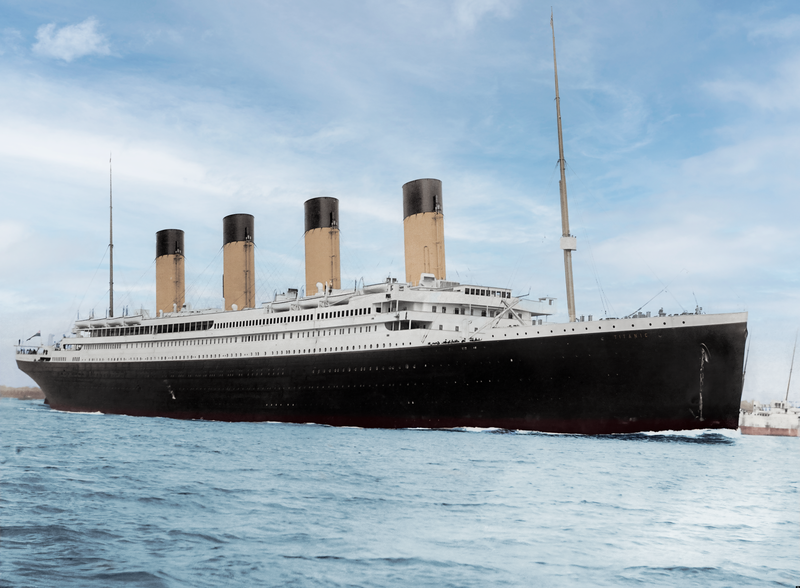
The Titanic Story with Facts and Figures.
Last Updated on August 1, 2023 by Editorial Team
Author(s): Alinadilawaiz
Originally published on Towards AI.

Hello there! I’m Alina. Today, I am going to delve into the renowned Titanic story. Merging the Titanic story with data science, we’ll look into its facts and figures.
Let’s go back to 1912 and see what happened to … , “ The majestic Unsinkable Titanic,” one of the most famous British luxurious ships.
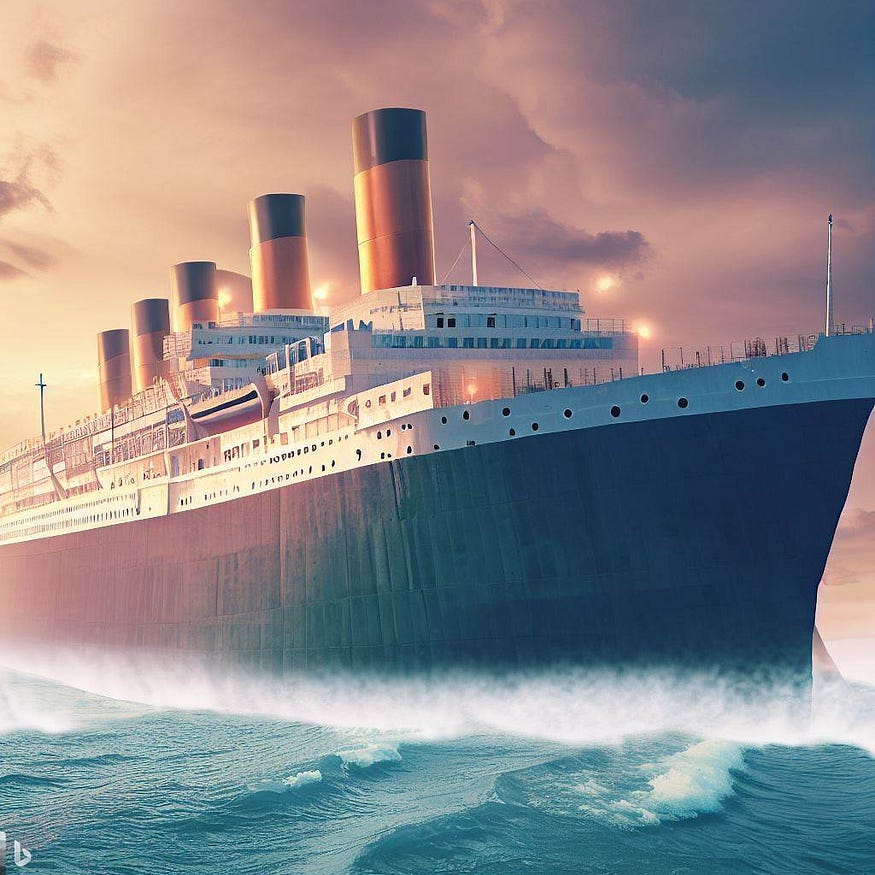
It was owned by the White Star Line company. The construction of the Titanic began on March 31, 1909, at the Harland and Wolff shipyard in Belfast, Northern Ireland (which was part of the White Star Line’s network). It took nearly three years to complete the ship, and it was launched on May 31, 1911. The Titanic was equipped with state-of-the-art safety features, such as watertight compartments, which were believed to make it unsinkable.
The ship’s maiden voyage was scheduled for April 10, 1912, from Southampton, England, to New York City, USA, with stops in Cherbourg (a port city) in France, and Queenstown (a town, now Cobh) in Ireland.
The Titanic began its journey from Southampton. On board the Titanic were approximately 2,224 passengers and crew. Captain Edward J. Smith was appointed as the captain of the RMS Titanic. The passengers comprised wealthy individuals, celebrities, immigrants who were willing to seek a better life in America, and a mix of first, second, and third-class travelers.

Note: Please note that our analysis is based on a sample of passenger data. The plots provided represent a subset of the entire population data.
Queenstown, now known as Cobh, is located in County Cork, Ireland. It was the Titanic’s last port of call before heading across the Atlantic. Queenstown was primarily an embarkation point for third-class passengers, many of whom were Irish immigrants willing to seek a new life in America.
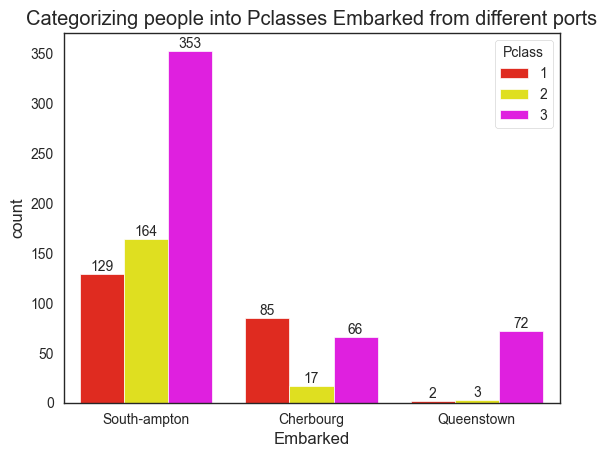
As mentioned above… Queenstown was primarily an embarkation point for third-class passengers. Most of the passengers from Queenstown port were traveling in 3rd class, with only 3 individuals in 2nd class and an even smaller number, 2 individuals, in 1st class.
The Titanic was like a floating palace, with lots of luxurious rooms, elegant first-class cabins, a grand staircase, a gym, a library, a swimming pool, a squash court, and dining halls. First-class passengers enjoyed the finest amenities and service, with luxurious suites, lavish dining rooms, and even a Turkish bath. Second-class and third-class passengers also experienced a level of comfort.
On the second day of its journey on April 12, 1912, the Titanic received its first ice warnings and changed its route two times to avoid icebergs. It’s a common practice to receive such warnings. At sea, ships communicate with each other through radio and warn each other of approaching danger. After two days, on April 14, 1912, seven more ice warnings were received, but Captain Edward J. Smith and the crew members didn’t pay much attention to them, and they didn’t slow the speed of the Titanic.
On the night of April 14, 1912, the moonlight was very low. The Titanic was rushing towards its destination smoothly. Suddenly, around 11:40 pm ship’s time, a crew member named “FLEDRICK FLEET,” who was on the CREW’S NEST (a lookout point at some height on the ship), saw a huge iceberg just in front of the ship. He immediately rang the bell and informed others through the phone. The officers on duty, including First Officer William Murdoch, acted swiftly to avoid a direct collision. They attempted to steer the Titanic away from the iceberg by turning the ship, but it was too late. The ship’s starboard side grazed the massive ice mountain, causing a series of deep scratches along the hull.
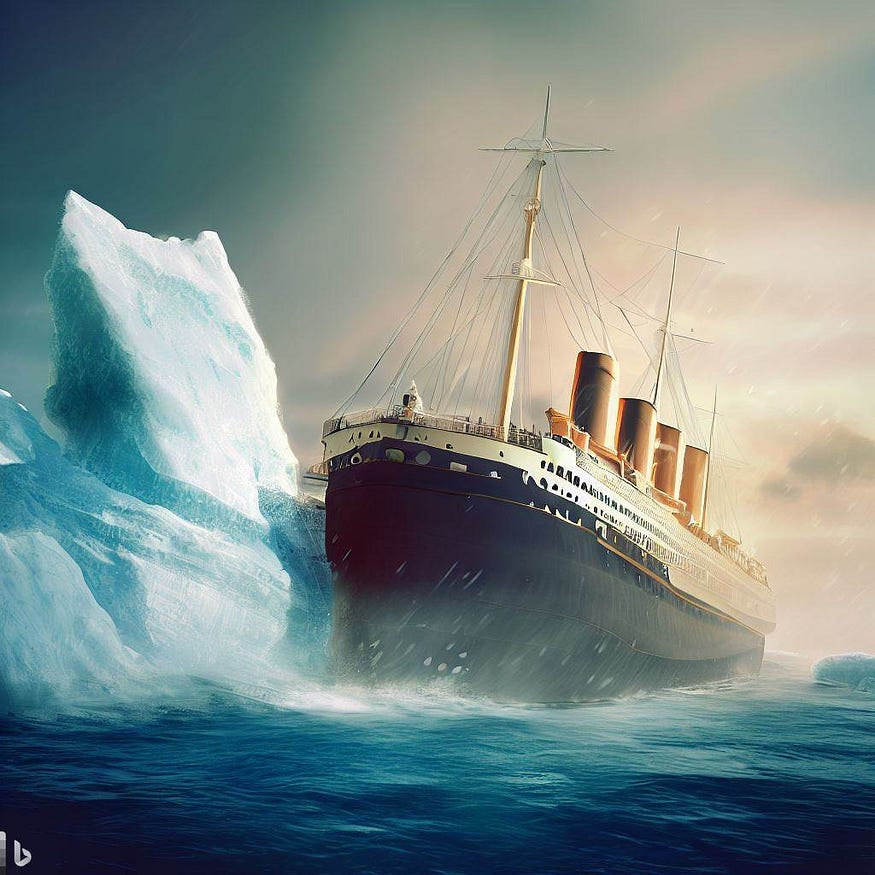
The ship was designed with water-tight compartments meant to store flooding in case of an accident. However, the damage caused by the iceberg’s sharp edges was severe, puncturing six compartments of the ship. As the situation was assessed, the sinking of the Titanic became evident, and it was necessary to ensure passengers’ safety.
The crew worked tirelessly to launch the lifeboats and ensure that passengers were safely evacuated. However, there were only 20 lifeboats, enough only for about half of the people on board. They were so sure that the Titanic was unsinkable that they didn’t carry enough lifeboats. Unfortunately, due to the lack of lifeboats, 1500 lives couldn’t be saved.

In the rescue operation, women were preferred over men, as demonstrated by the plot.
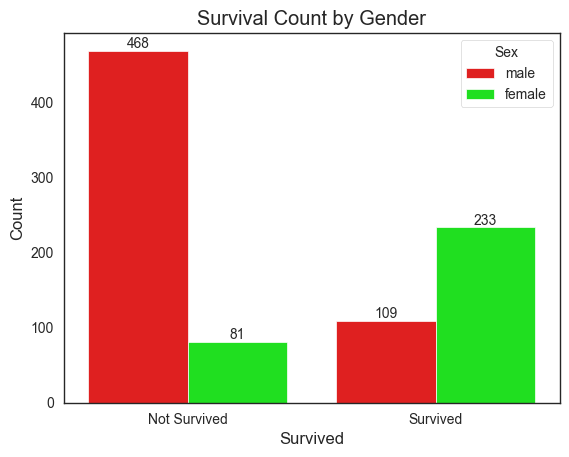
It’s a sad fact that during the rescue operation, elitism was practiced(rich or wealthy people being preferred over others).

Keep in mind that:
0 refers to “Not Survived”
1 refers to “Survived”
The lowest fare was ‘$0’, and the highest fare was ‘$513’.
Only one individual traveling with a fare of ‘Free’ was saved.
Almost 36% of the passengers traveling with a fare between $0 and $100 survived.
Almost 75% of the passengers traveling with a fare between $100 and $200 survived.
Almost 64% of the passengers traveling with a fare between $200 and $300 survived.
There were no passengers (in this data) with a fare between $300 and $400 who survived.
And 100% of the passengers traveling with a fare between $400 and $513 (there were three people with a fare of ‘$513’) survived.
Now let’s have a look at the survival rate of passengers embarked from different ports:
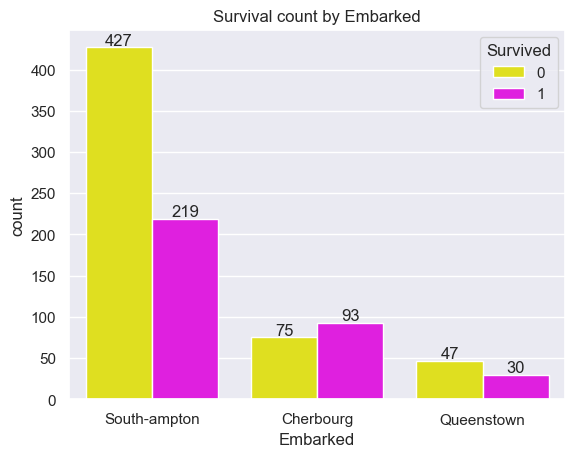
Based on the data presented in the plot:
33% of passengers from Southampton survived.
55% of passengers from Cherbourg survived.
38% of passengers from Queenstown survived.
Now let’s have a look at the survival rate based on courtesy titles:
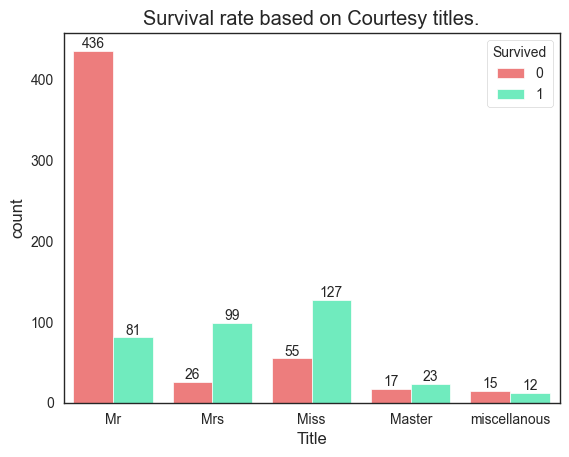
Based on the data presented in the plot:
– The survival rate of passengers with the title “Mrs” was 79%.
– The survival rate of passengers with the title “Miss” was 69%.
– The survival rate of passengers with the title “Master” was 57%.
– 44% of miscellaneous passengers survived.
– The survival rate of passengers with the title “Mr” was 15%.
Based on the data we have, there are seven passengers with ages above 70. Let’s have a look at whether they survived or not:
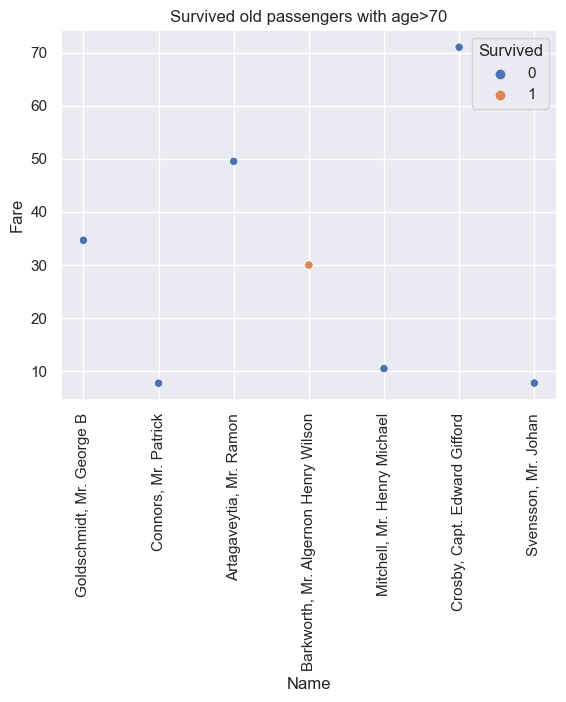
They were traveling in third class, as they were paying a fare under $100. Unfortunately, only one of them, “Barkworth, Mr. Algernon Henry Wilson,” survived.
In 1985, the ship’s wreckage was discovered at a depth of approximately 12,500 feet (3,800 meters), resting silently on the ocean floor.
The sinking of the Titanic remains one of the most tragic maritime disasters in history. This tragedy prompted a thorough investigation into maritime safety regulations. Significant changes were made, ensuring that future vessels had enough lifeboats for all passengers and improved radio communication to prevent such calamities.
So, that’s all for today. I hope you enjoyed the article and gained useful insights from it. Thanks for investing your precious time in it. Stay tuned, and Stay Blessed 🙂
Join thousands of data leaders on the AI newsletter. Join over 80,000 subscribers and keep up to date with the latest developments in AI. From research to projects and ideas. If you are building an AI startup, an AI-related product, or a service, we invite you to consider becoming a sponsor.
Published via Towards AI
Take our 90+ lesson From Beginner to Advanced LLM Developer Certification: From choosing a project to deploying a working product this is the most comprehensive and practical LLM course out there!
Towards AI has published Building LLMs for Production—our 470+ page guide to mastering LLMs with practical projects and expert insights!

Discover Your Dream AI Career at Towards AI Jobs
Towards AI has built a jobs board tailored specifically to Machine Learning and Data Science Jobs and Skills. Our software searches for live AI jobs each hour, labels and categorises them and makes them easily searchable. Explore over 40,000 live jobs today with Towards AI Jobs!
Note: Content contains the views of the contributing authors and not Towards AI.














